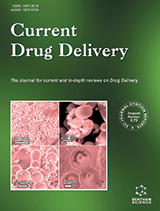Abstract
Background: Since their appearance on the drugs of abuse market, synthetic cannabinoids (SCs) are gaining increasing toxicological relevance. They are consumed without knowledge of their toxicokinetic (TK) and toxicodynamic properties and human studies are not allowed due to ethical reasons. A controlled animal TK study following nebulization of 4-ethylnaphthalene-1-yl-(1-pentylindole- 3-yl)methanone (JWH-210), 2-(4-methoxyphenyl)-1-(1-pentyl-indole-3-yl)methanone (RCS-4) as well as Δ9-tetrahydrocannabinol (THC) to pigs should be helpful for better interpretation of analytical results in cases of misuse or poisoning. As a prerequisite, an in-vitro test system mimicking a ventilated pig had to be developed to determine the quantity and reproducibility of which drug dose is delivered to the pig lung.
Methods: JWH-210, RCS-4, and THC (1 mg in 2 mL ethanol each) were nebulized during ventilation using an ultrasonic nebulizer. The drug aerosol was delivered via the inspiratory limb and the endotracheal tube passing through a glass fiber filter (n = 6). The drugs were extracted from the filters using ethanol and ultrasonication. After several dilution steps and adding an internal standard solution, the extracts were analyzed by LC-MS/MS.
Results: Extraction of the nebulized drugs revealed delivery efficiencies of 78.8 ± 5.0% for JWH-210, 70.5 ± 6.9% for RCS-4, and 70.8 ± 7.9% for THC. The loss of about 20-30% of the administered dose might be attributable to retention in the nebulizer device or adhesion of the aerosol particles to the tube wall.
Conclusion: Nevertheless, regarding delivery efficiencies, the minor standard deviations indicate an acceptable reproducibility, suggesting that this administration system is suitable for application in TK studies.
Keywords: Synthetic cannabinoids, tetrahydrocannabinol, drug delivery efficiency, nebulization, toxicokinetics, LC-MS/MS.
Graphical Abstract
Current Drug Delivery
Title:Development of an In-vitro Drug Delivery Efficiency Test for a Pulmonary Toxicokinetic Pig Study
Volume: 15 Issue: 8
Author(s): Nadine Schaefer*, Ann K. Kroll, Matthias W. Laschke, Michael D. Menger, Hans H. Maurer, Markus R. Meyer*Peter H. Schmidt
Affiliation:
- Institute of Legal Medicine, Saarland University, Building 80.2, D-66421 Homburg (Saar),Germany
- Department of Experimental and Clinical Toxicology, Saarland University, Building 46 D-66421 Homburg (Saar),Germany
Keywords: Synthetic cannabinoids, tetrahydrocannabinol, drug delivery efficiency, nebulization, toxicokinetics, LC-MS/MS.
Abstract: Background: Since their appearance on the drugs of abuse market, synthetic cannabinoids (SCs) are gaining increasing toxicological relevance. They are consumed without knowledge of their toxicokinetic (TK) and toxicodynamic properties and human studies are not allowed due to ethical reasons. A controlled animal TK study following nebulization of 4-ethylnaphthalene-1-yl-(1-pentylindole- 3-yl)methanone (JWH-210), 2-(4-methoxyphenyl)-1-(1-pentyl-indole-3-yl)methanone (RCS-4) as well as Δ9-tetrahydrocannabinol (THC) to pigs should be helpful for better interpretation of analytical results in cases of misuse or poisoning. As a prerequisite, an in-vitro test system mimicking a ventilated pig had to be developed to determine the quantity and reproducibility of which drug dose is delivered to the pig lung.
Methods: JWH-210, RCS-4, and THC (1 mg in 2 mL ethanol each) were nebulized during ventilation using an ultrasonic nebulizer. The drug aerosol was delivered via the inspiratory limb and the endotracheal tube passing through a glass fiber filter (n = 6). The drugs were extracted from the filters using ethanol and ultrasonication. After several dilution steps and adding an internal standard solution, the extracts were analyzed by LC-MS/MS.
Results: Extraction of the nebulized drugs revealed delivery efficiencies of 78.8 ± 5.0% for JWH-210, 70.5 ± 6.9% for RCS-4, and 70.8 ± 7.9% for THC. The loss of about 20-30% of the administered dose might be attributable to retention in the nebulizer device or adhesion of the aerosol particles to the tube wall.
Conclusion: Nevertheless, regarding delivery efficiencies, the minor standard deviations indicate an acceptable reproducibility, suggesting that this administration system is suitable for application in TK studies.
Export Options
About this article
Cite this article as:
Schaefer Nadine *, Kroll K. Ann , Laschke W. Matthias , Menger D. Michael , Maurer H. Hans , Meyer R. Markus *, Schmidt H. Peter , Development of an In-vitro Drug Delivery Efficiency Test for a Pulmonary Toxicokinetic Pig Study, Current Drug Delivery 2018; 15 (8) . https://dx.doi.org/10.2174/1567201815666180214130014
| DOI https://dx.doi.org/10.2174/1567201815666180214130014 |
Print ISSN 1567-2018 |
| Publisher Name Bentham Science Publisher |
Online ISSN 1875-5704 |
 34
34 3
3 1
1
- Author Guidelines
- Bentham Author Support Services (BASS)
- Graphical Abstracts
- Fabricating and Stating False Information
- Research Misconduct
- Post Publication Discussions and Corrections
- Publishing Ethics and Rectitude
- Increase Visibility of Your Article
- Archiving Policies
- Peer Review Workflow
- Order Your Article Before Print
- Promote Your Article
- Manuscript Transfer Facility
- Editorial Policies
- Allegations from Whistleblowers


























